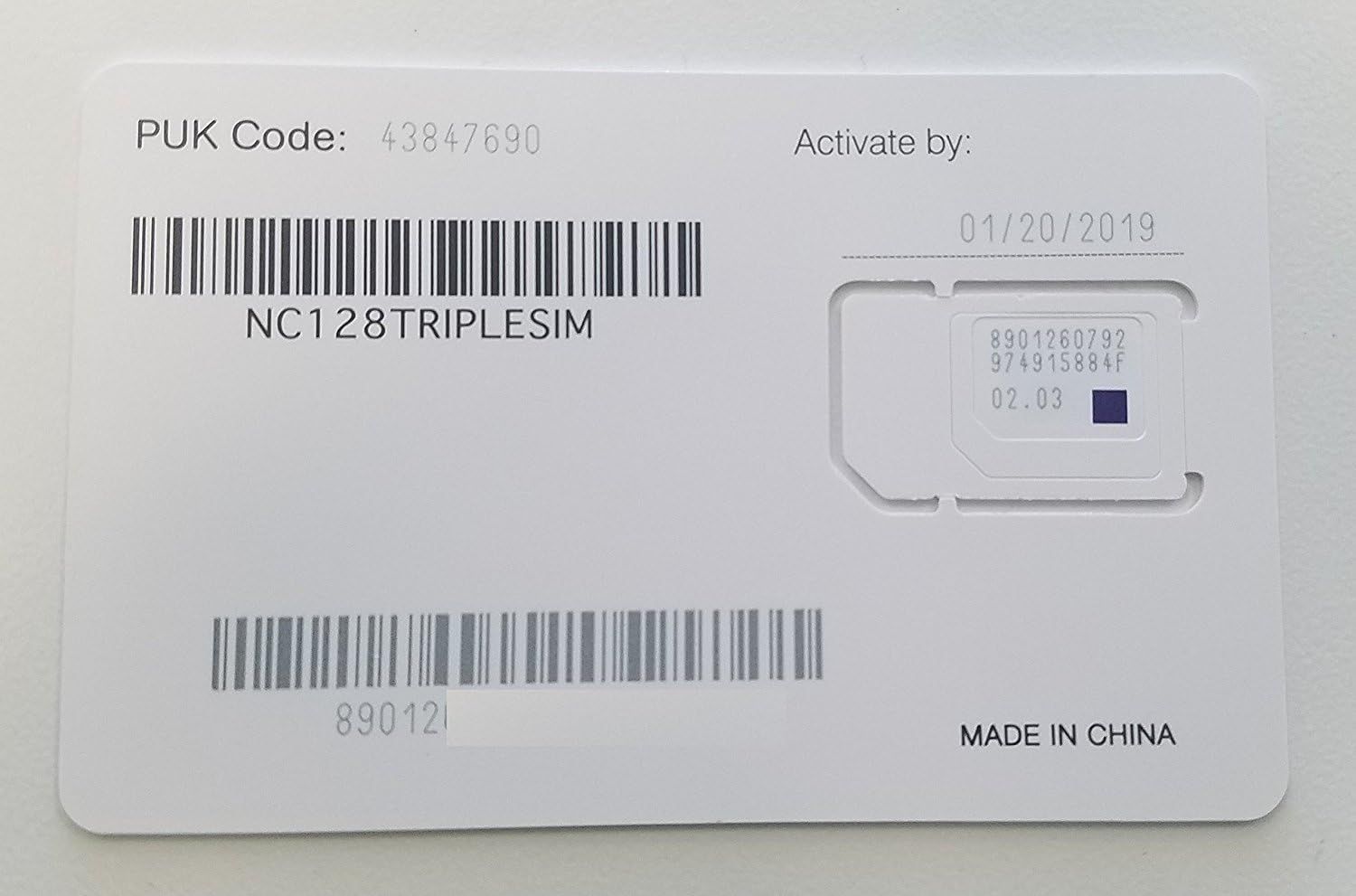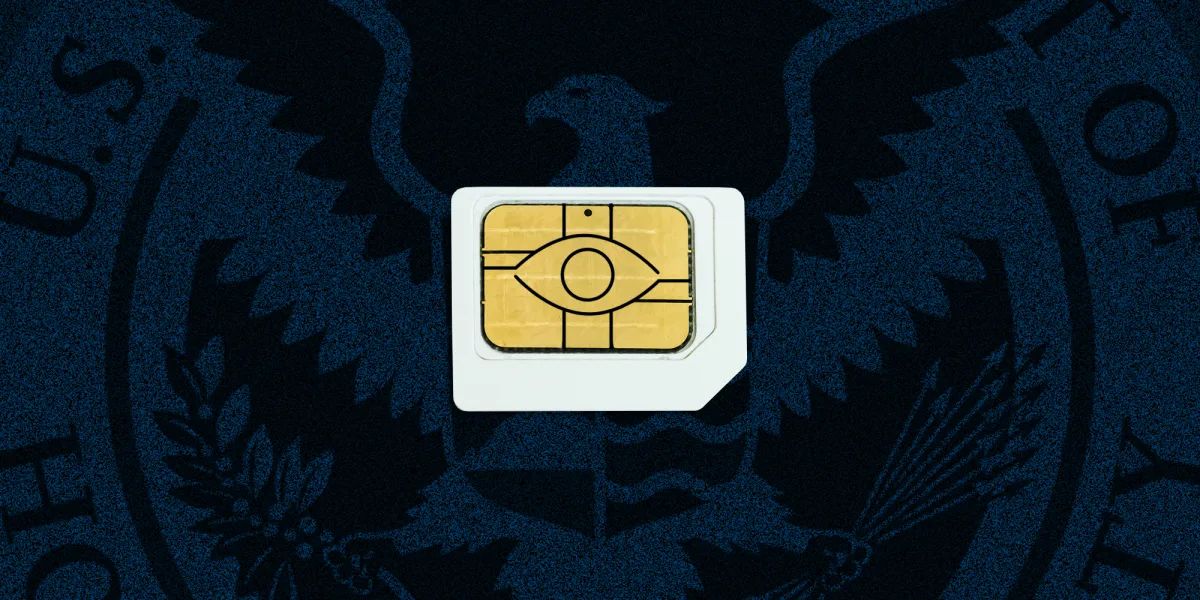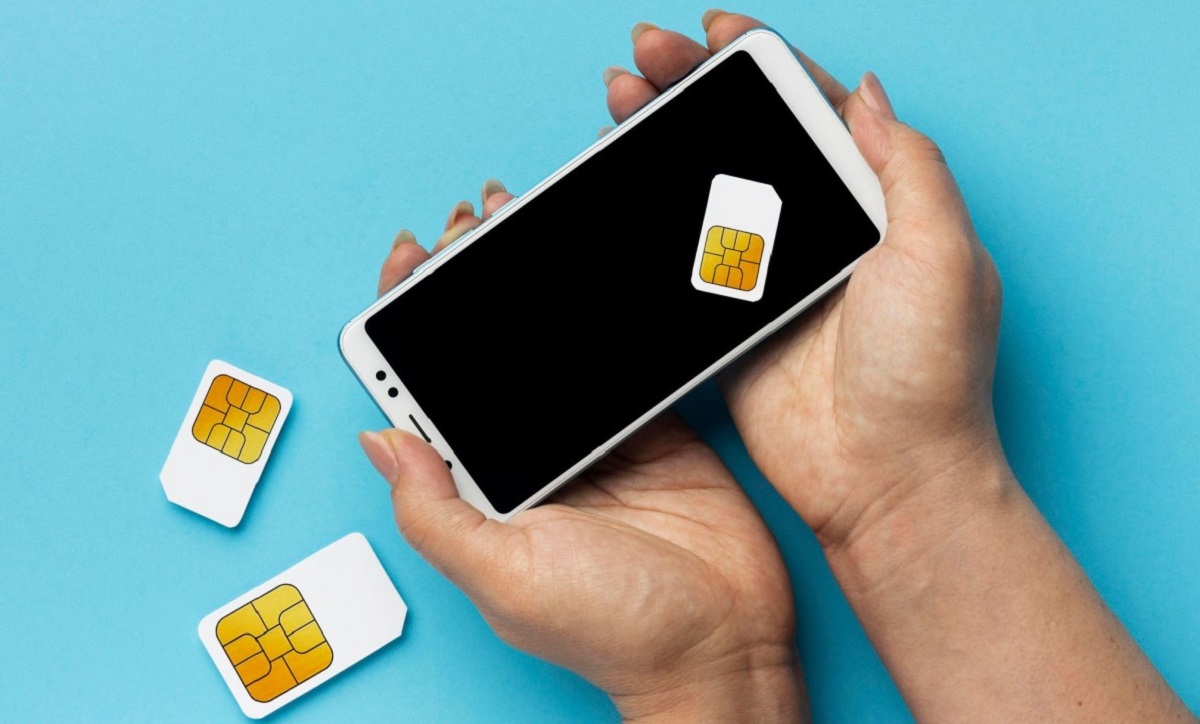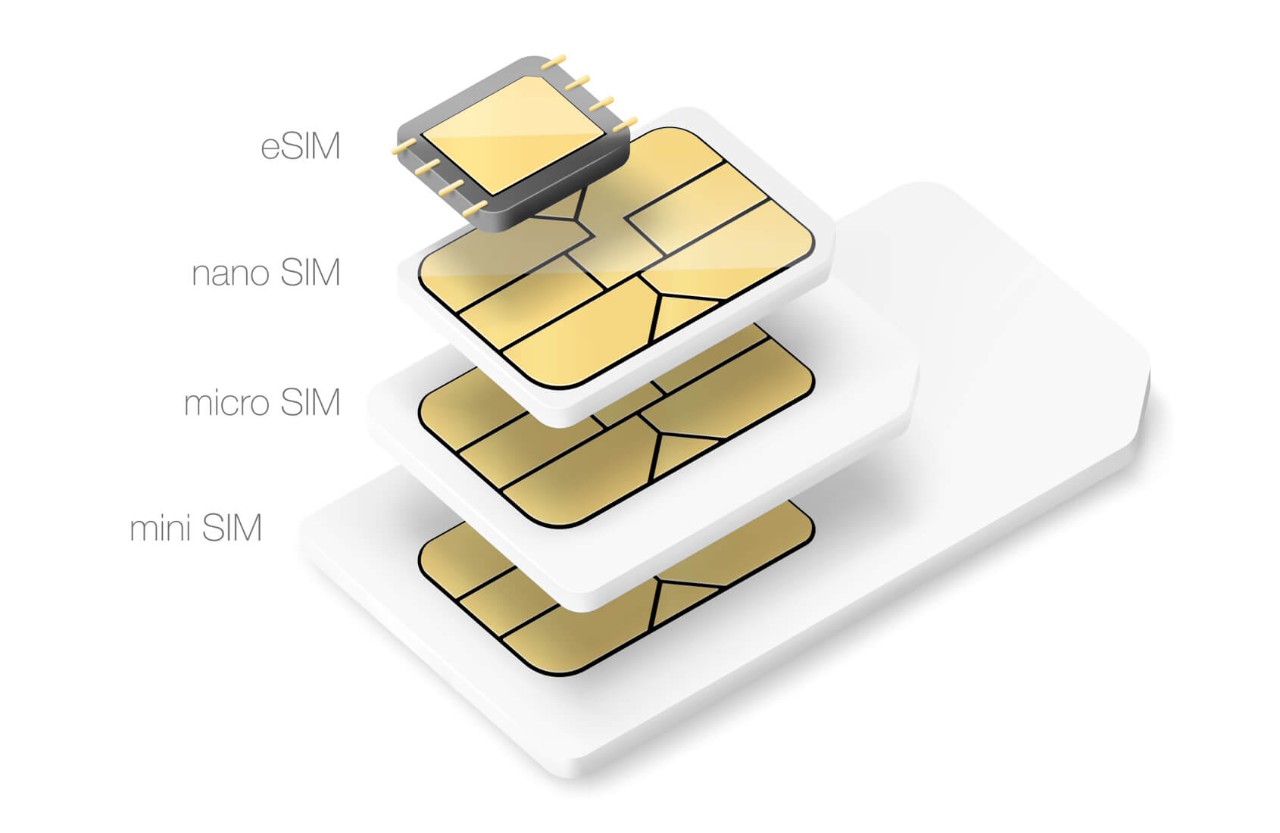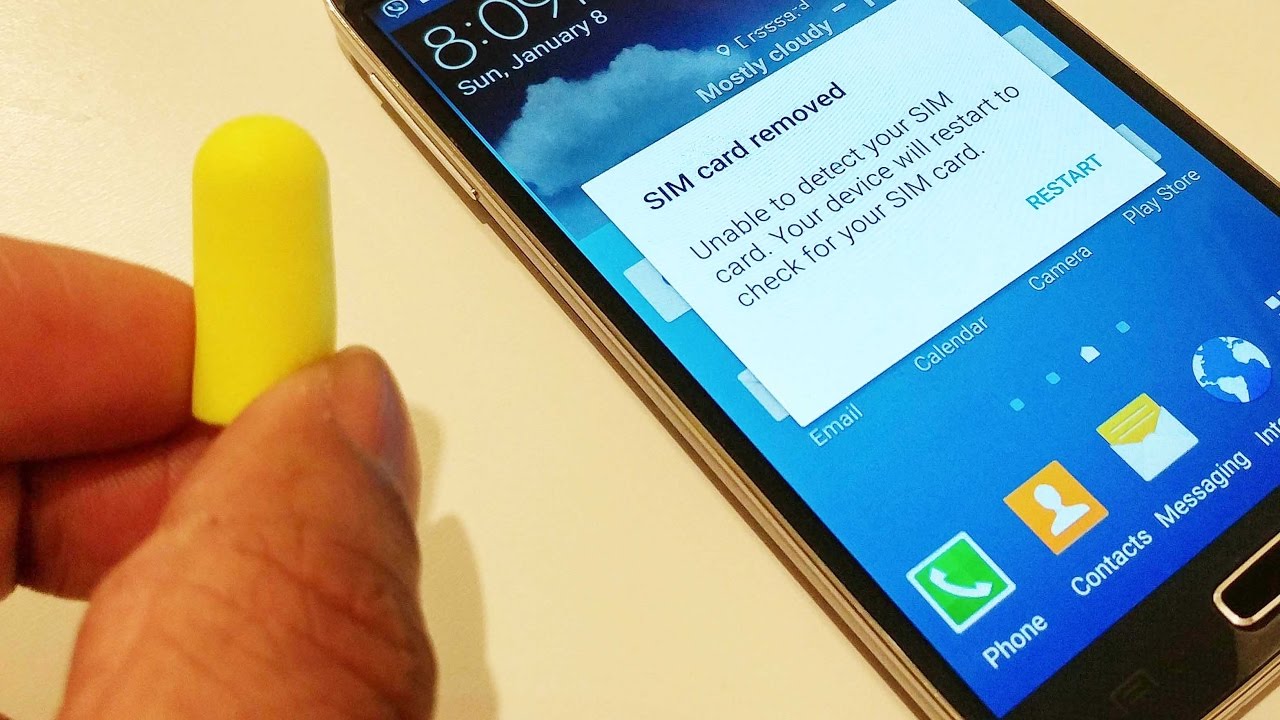Introduction
In the ever-evolving landscape of mobile technology, the SIM card stands as a fundamental component that facilitates seamless communication and connectivity. As the acronym for Subscriber Identity Module suggests, the SIM card plays a pivotal role in identifying and authenticating users on mobile networks. This tiny yet powerful chip is integral to the functioning of mobile devices, enabling users to make calls, send messages, and access mobile data services.
The impact of changing a SIM card extends beyond a mere physical switch; it delves into the realms of communication, data usage, security, and device compatibility. Understanding the implications of this change is crucial for users seeking to optimize their mobile experience while safeguarding their personal information.
By delving into the nuances of SIM card replacement, we can unravel the multifaceted impact it has on various aspects of mobile usage. From the practical implications on communication and internet access to the intricacies of data security and privacy, the process of changing a SIM card warrants a comprehensive exploration.
In this guide, we will navigate through the intricate web of SIM card dynamics, shedding light on the reasons for changing SIM cards, the impact on communication and data usage, security and privacy considerations, and the implications for device compatibility. Additionally, we will outline the step-by-step process of changing a SIM card, empowering users with the knowledge to navigate this transition seamlessly.
Embark on this insightful journey to gain a comprehensive understanding of the impact of changing a SIM card, and equip yourself with the knowledge to navigate this pivotal aspect of mobile device management.
Understanding SIM Cards
A SIM card, or Subscriber Identity Module card, is a small, removable chip that plays a pivotal role in the functioning of mobile devices. It serves as the linchpin for authenticating and identifying users on mobile networks, enabling them to access voice, messaging, and data services. The SIM card contains crucial information, including the unique IMSI (International Mobile Subscriber Identity) number, which is essential for connecting to a mobile network and identifying the user to the network operator.
There are different types of SIM cards, each designed to cater to specific mobile devices and network technologies. The traditional full-size SIM has evolved into smaller form factors, including the mini-SIM, micro-SIM, and the currently prevalent nano-SIM, which is significantly smaller and more suitable for modern smartphones and devices. Additionally, the eSIM (embedded SIM) has emerged as a virtual, programmable SIM card integrated into devices, eliminating the need for a physical SIM card.
The SIM card also stores essential user information, such as contacts, text messages, and network-specific settings. This data is securely stored on the SIM card, ensuring portability and ease of transfer when switching devices. Furthermore, the SIM card holds cryptographic keys that authenticate the user's identity to the mobile network, ensuring secure communication and data transmission.
In terms of network compatibility, SIM cards are associated with specific mobile operators and their respective networks. This association dictates the services and tariffs available to the user. When a SIM card is inserted into a device, it establishes a connection to the associated network, enabling the user to make calls, send messages, and access mobile data services.
Understanding the intricacies of SIM cards is essential for users seeking to optimize their mobile experience and navigate the process of changing SIM cards. By comprehending the role of SIM cards in mobile communication, data access, and network authentication, users can make informed decisions and effectively manage their mobile devices.
In the subsequent sections, we will delve deeper into the reasons for changing SIM cards and the multifaceted impact it has on communication, data usage, security, privacy, and device compatibility. This comprehensive exploration will empower users with the knowledge to navigate the process of changing a SIM card seamlessly, ensuring a smooth transition and optimized mobile experience.
Reasons for Changing SIM Cards
Changing SIM cards can be prompted by various factors, each influencing the user's mobile experience in distinct ways. Understanding the reasons for changing SIM cards is pivotal for users seeking to optimize their mobile connectivity and adapt to evolving circumstances. Here are the primary reasons for changing SIM cards:
-
Network Migration: Users may opt to change SIM cards when migrating to a new mobile network provider. This decision could stem from seeking better network coverage, more competitive pricing, or enhanced services offered by a different operator. By switching to a new SIM card associated with the desired network, users can leverage improved connectivity and tailored service plans.
-
Upgrading to a New Device: When upgrading to a new mobile device, users often need to change SIM cards to ensure compatibility with the device's SIM card slot. For instance, transitioning from a device that accommodates a larger SIM card size to a newer model requiring a smaller nano-SIM may necessitate a SIM card change. This enables seamless integration of the SIM card with the new device, ensuring uninterrupted communication and data access.
-
International Travel: Traveling abroad often necessitates changing SIM cards to access local network services and avoid exorbitant roaming charges. By acquiring a local SIM card at the travel destination, users can benefit from cost-effective local tariffs and data plans, facilitating seamless communication and internet access while abroad.
-
SIM Card Damage or Malfunction: In the event of a damaged or malfunctioning SIM card, users are compelled to change the SIM card to restore essential mobile services. Physical damage, such as a cracked or bent SIM card, or technical issues affecting the SIM card's functionality may prompt the need for a replacement to ensure uninterrupted connectivity.
-
Enhanced Security and Privacy: Changing SIM cards can be a proactive measure to enhance security and privacy. Users may opt to change SIM cards if they suspect unauthorized access to their mobile network or seek to mitigate potential security vulnerabilities. By acquiring a new SIM card and associated phone number, users can bolster their mobile security posture and safeguard their personal information.
By comprehending the diverse reasons for changing SIM cards, users can make informed decisions tailored to their specific needs and circumstances. This awareness empowers users to optimize their mobile connectivity, adapt to dynamic situations, and proactively address security and functionality concerns. Understanding the impact of these reasons on the mobile experience is crucial for users navigating the process of changing SIM cards.
Impact on Communication
The process of changing a SIM card can significantly impact communication dynamics, influencing the ability to make calls, send messages, and access mobile services. When a user changes their SIM card, several aspects of communication are affected, shaping the way they interact and connect with others.
One of the primary impacts on communication is the alteration of the phone number associated with the new SIM card. This change directly influences how others reach the user, requiring them to inform contacts of the updated phone number. This transition may lead to temporary communication disruptions as contacts adjust to the new contact details. However, once the revised phone number is disseminated, communication can resume seamlessly.
Moreover, changing a SIM card may entail modifications in service plans and tariffs, potentially affecting the user's communication capabilities. Users may encounter varied call and messaging rates, as well as distinct data plans associated with the new SIM card. Understanding these changes is crucial to manage communication expenses and optimize the utilization of mobile services.
Additionally, the impact on communication extends to the accessibility of voicemail services and call forwarding features. When transitioning to a new SIM card, users need to reconfigure these settings to ensure uninterrupted access to voicemail and the seamless redirection of calls. This adjustment is essential to maintain efficient communication channels and prevent missed calls or messages.
Furthermore, the compatibility of the new SIM card with the user's device plays a vital role in communication. Ensuring that the device supports the frequency bands and network technologies associated with the new SIM card is imperative for uninterrupted communication. Incompatibility issues can lead to signal disruptions, affecting call quality and data connectivity.
In essence, changing a SIM card has a profound impact on communication, influencing phone numbers, service plans, accessibility of communication features, and device compatibility. Understanding and addressing these impacts is essential for users navigating the process of changing a SIM card, empowering them to adapt to the evolving communication landscape and maintain seamless connectivity.
This comprehensive exploration of the impact on communication elucidates the multifaceted nature of SIM card replacement, providing users with valuable insights to effectively manage the transition and optimize their communication experience.
Impact on Data and Internet Usage
The impact of changing a SIM card extends beyond communication dynamics, significantly influencing data usage and internet accessibility. When a user replaces their SIM card, several critical aspects of data and internet usage are affected, shaping their ability to access online services, browse the web, and utilize mobile applications.
One of the primary implications of changing a SIM card is the alteration of data plans and tariffs associated with the new SIM card. Users may encounter varying data allowances, speed limitations, and distinct pricing structures, directly influencing their data consumption patterns. Understanding these changes is pivotal for effectively managing data usage, optimizing the utilization of mobile data, and avoiding unexpected charges.
Moreover, the network coverage and data speed provided by the new SIM card play a pivotal role in shaping the user's internet experience. Users may experience differences in network availability and data speeds, impacting their ability to access online content, stream media, and engage in real-time communication. Ensuring that the new SIM card aligns with the user's data usage requirements and geographical location is essential for a seamless internet experience.
Additionally, the compatibility of the new SIM card with the user's device influences data connectivity and internet accessibility. Users must ensure that their device supports the network technologies and frequency bands associated with the new SIM card to avoid disruptions in data transmission and internet connectivity. Incompatibility issues can lead to reduced data speeds, intermittent connectivity, and limitations in accessing online services.
Furthermore, the process of changing a SIM card may prompt the need to reconfigure mobile internet settings, such as APN (Access Point Name) configurations, to align with the requirements of the new SIM card and network operator. This adjustment is crucial to ensure seamless internet access and optimal data transmission, enabling users to leverage the full potential of their mobile data services.
In essence, changing a SIM card has a profound impact on data usage and internet accessibility, influencing data plans, network coverage, device compatibility, and internet settings. Understanding and addressing these impacts is essential for users navigating the process of changing a SIM card, empowering them to adapt to the evolving data landscape and optimize their internet usage.
This comprehensive exploration elucidates the multifaceted nature of SIM card replacement, providing users with valuable insights to effectively manage the transition and optimize their data and internet experience.
Impact on Security and Privacy
The process of changing a SIM card exerts a profound impact on the security and privacy aspects of mobile usage, necessitating a comprehensive understanding of the implications for users. When a user replaces their SIM card, several critical facets of security and privacy are influenced, shaping the protection of personal information and the integrity of mobile communications.
One of the primary implications of changing a SIM card is the potential enhancement of security measures. Users may opt to change SIM cards as a proactive measure to mitigate security vulnerabilities and safeguard their personal data. This decision could stem from concerns about unauthorized access to their mobile network or the suspicion of compromised security credentials. By acquiring a new SIM card and associated phone number, users can bolster their mobile security posture, effectively severing unauthorized access and fortifying the authentication mechanisms linked to their mobile network.
Furthermore, the replacement of a SIM card directly impacts the confidentiality of user information. The SIM card stores crucial cryptographic keys that authenticate the user's identity to the mobile network, ensuring secure communication and data transmission. When changing the SIM card, users effectively reset these cryptographic keys, mitigating the risk of unauthorized interception or eavesdropping on mobile communications. This reset contributes to reinforcing the privacy of voice calls, text messages, and data exchanges, fostering a heightened level of confidentiality in mobile interactions.
Moreover, the process of changing a SIM card prompts users to reassess their digital footprint and control access to their personal information. By acquiring a new SIM card and associated phone number, users can effectively dissociate from previous communication channels and reestablish their digital identity. This dissociation contributes to mitigating potential privacy risks associated with persistent identification and facilitates a renewed sense of control over personal information dissemination.
In essence, changing a SIM card has a profound impact on security and privacy, influencing security measures, confidentiality of user information, and control over digital identity. Understanding and addressing these impacts is essential for users navigating the process of changing a SIM card, empowering them to fortify their security posture and safeguard their privacy in the mobile domain.
This comprehensive exploration elucidates the multifaceted nature of SIM card replacement, providing users with valuable insights to effectively manage the transition and optimize their security and privacy stance in the mobile realm.
Impact on Contacts and Saved Information
Changing a SIM card inevitably impacts the contacts and saved information stored on the previous SIM card. The SIM card serves as a repository for essential user data, including contacts, text messages, and network-specific settings. When a user replaces their SIM card, the transfer of this vital information to the new SIM card becomes a pivotal consideration.
One of the primary implications of changing a SIM card is the need to transfer contacts and saved information to the new SIM card or an alternative storage medium. Contacts stored on the previous SIM card must be migrated to the new SIM card to ensure seamless access to essential contact details. This process involves exporting contacts from the old SIM card and importing them to the new SIM card or synchronizing them with the user's device or cloud storage. By undertaking this transfer, users can retain access to their contacts and prevent disruptions in communication channels.
Furthermore, the transition to a new SIM card prompts users to assess and manage the transfer of saved text messages and network-specific settings. Text messages stored on the previous SIM card may need to be archived or transferred to the new SIM card or alternative storage solutions to preserve important communication records. Additionally, network-specific settings, such as call forwarding configurations and voicemail access codes, may require reconfiguration to align with the functionalities of the new SIM card and network operator.
Moreover, the process of changing a SIM card necessitates a comprehensive evaluation of the saved information and data stored on the previous SIM card. Users must consider the migration of essential information, such as service provider-specific settings, network access codes, and personalized configurations, to ensure a seamless transition to the new SIM card. By meticulously managing the transfer of saved information, users can maintain continuity in their mobile experience and prevent data loss or service disruptions.
In essence, changing a SIM card has a profound impact on contacts and saved information, necessitating the meticulous transfer and management of crucial user data. Understanding and addressing these impacts is essential for users navigating the process of changing a SIM card, empowering them to preserve essential contacts, communication records, and personalized settings seamlessly.
This comprehensive exploration elucidates the multifaceted nature of SIM card replacement, providing users with valuable insights to effectively manage the transition and optimize the retention of contacts and saved information in the mobile domain.
Impact on Device Compatibility
The impact of changing a SIM card extends to the realm of device compatibility, exerting significant influence on the seamless integration of the SIM card with the user's mobile device. When a user replaces their SIM card, several critical aspects of device compatibility come into play, shaping the functionality and connectivity of the mobile device.
One of the primary implications of changing a SIM card is the consideration of SIM card form factors and their compatibility with the device's SIM card slot. Different mobile devices accommodate specific SIM card sizes, ranging from the traditional full-size SIM to the smaller micro-SIM and nano-SIM variants. When transitioning to a new SIM card, users must ensure that the form factor aligns with the requirements of their device's SIM card slot. This compatibility is pivotal for the physical insertion of the SIM card into the device, enabling seamless connectivity and network access.
Furthermore, the compatibility of the new SIM card with the device's network technologies and frequency bands plays a crucial role in ensuring uninterrupted communication and data connectivity. Different mobile operators deploy varied network technologies, such as GSM, CDMA, and LTE, each operating on distinct frequency bands. Users must verify that the new SIM card is compatible with the network technologies supported by their device, ensuring optimal signal reception and data transmission. Incompatibility issues can lead to signal disruptions, affecting call quality and internet accessibility.
Moreover, the process of changing a SIM card prompts users to reassess the device's compatibility with the network services and functionalities associated with the new SIM card. Compatibility considerations encompass the support for advanced mobile services, such as VoLTE (Voice over LTE) and Wi-Fi calling, which may be contingent on the compatibility of the device with the network operator's offerings. Ensuring seamless compatibility with these services is essential for leveraging the full spectrum of mobile capabilities and enhancing the user's communication experience.
In essence, changing a SIM card has a profound impact on device compatibility, influencing SIM card form factors, network technology compatibility, and support for advanced mobile services. Understanding and addressing these compatibility considerations is essential for users navigating the process of changing a SIM card, empowering them to seamlessly integrate the new SIM card with their mobile device and optimize their connectivity experience.
This comprehensive exploration elucidates the multifaceted nature of SIM card replacement, providing users with valuable insights to effectively manage the transition and ensure optimal device compatibility in the mobile domain.
Steps to Change SIM Card
Changing a SIM card involves a series of straightforward yet crucial steps to ensure a seamless transition and uninterrupted mobile connectivity. By following these steps, users can effectively replace their SIM card and adapt to evolving network requirements or device upgrades. Here is a comprehensive guide outlining the essential steps to change a SIM card:
-
Power Off the Device: Before initiating the SIM card replacement process, it is imperative to power off the mobile device to prevent any potential damage to the SIM card or the device's SIM card slot.
-
Locate the SIM Card Slot: Identify the location of the SIM card slot on the device. The SIM card slot may be situated on the side, top, or back of the device, depending on the model and manufacturer.
-
Eject the SIM Card Tray: Use a SIM card ejector tool or a small paperclip to gently press the SIM card tray ejection mechanism. This action will release the SIM card tray, allowing access to the existing SIM card.
-
Remove the Old SIM Card: Carefully remove the existing SIM card from the SIM card tray, ensuring gentle handling to avoid any damage to the card or the tray.
-
Insert the New SIM Card: Place the new SIM card into the SIM card tray, aligning it according to the designated orientation. Ensure that the SIM card fits securely and snugly into the tray to facilitate proper connectivity.
-
Reinsert the SIM Card Tray: Once the new SIM card is securely placed in the tray, carefully reinsert the SIM card tray into the device until it locks into position.
-
Power On the Device: Power on the mobile device and allow it to initialize the new SIM card. The device will detect the new SIM card and establish connectivity with the associated mobile network.
-
Configure Network Settings: If necessary, configure network-specific settings, such as APN (Access Point Name) configurations, to align with the requirements of the new SIM card and network operator.
By diligently following these steps, users can effectively change their SIM card, ensuring a smooth transition and optimal functionality. These steps empower users to adapt to network migrations, device upgrades, or other circumstances necessitating a SIM card replacement, enabling them to maintain seamless mobile connectivity and communication capabilities.
Conclusion
In conclusion, the process of changing a SIM card encompasses a myriad of implications that extend beyond a mere physical switch. From its impact on communication dynamics to its influence on data usage, security, privacy, contacts, and device compatibility, the decision to replace a SIM card carries significant weight in shaping the user's mobile experience. By delving into the multifaceted nature of SIM card replacement, users can gain valuable insights to navigate this transition effectively and optimize their mobile connectivity.
Understanding the reasons for changing SIM cards, including network migration, device upgrades, international travel, security considerations, and SIM card damage, empowers users to make informed decisions aligned with their specific needs and circumstances. Whether seeking improved network coverage, enhanced services, or heightened security measures, comprehending these reasons is pivotal for optimizing the mobile experience.
The impact of changing a SIM card on communication, data usage, security, privacy, contacts, and device compatibility underscores the interconnected nature of mobile device management. From the alteration of phone numbers and communication plans to the meticulous transfer of contacts and saved information, each aspect influences the user's connectivity and interaction with the mobile ecosystem.
Furthermore, the step-by-step guide outlining the essential steps to change a SIM card equips users with practical knowledge to execute this process seamlessly, ensuring uninterrupted mobile connectivity and adaptability to evolving network requirements or device upgrades.
By unraveling the intricacies of SIM card dynamics, users can proactively address the implications of changing a SIM card, fortify their security posture, optimize communication and data usage, and seamlessly integrate the new SIM card with their mobile device. This comprehensive understanding empowers users to navigate the process of changing a SIM card with confidence, fostering a heightened sense of control over their mobile experience.
Embarking on this insightful journey to comprehend the impact of changing a SIM card enables users to embrace the evolving landscape of mobile technology, adapt to dynamic circumstances, and optimize their connectivity and communication capabilities. Ultimately, this knowledge empowers users to harness the full potential of their mobile devices, ensuring a seamless and enriched mobile experience.







